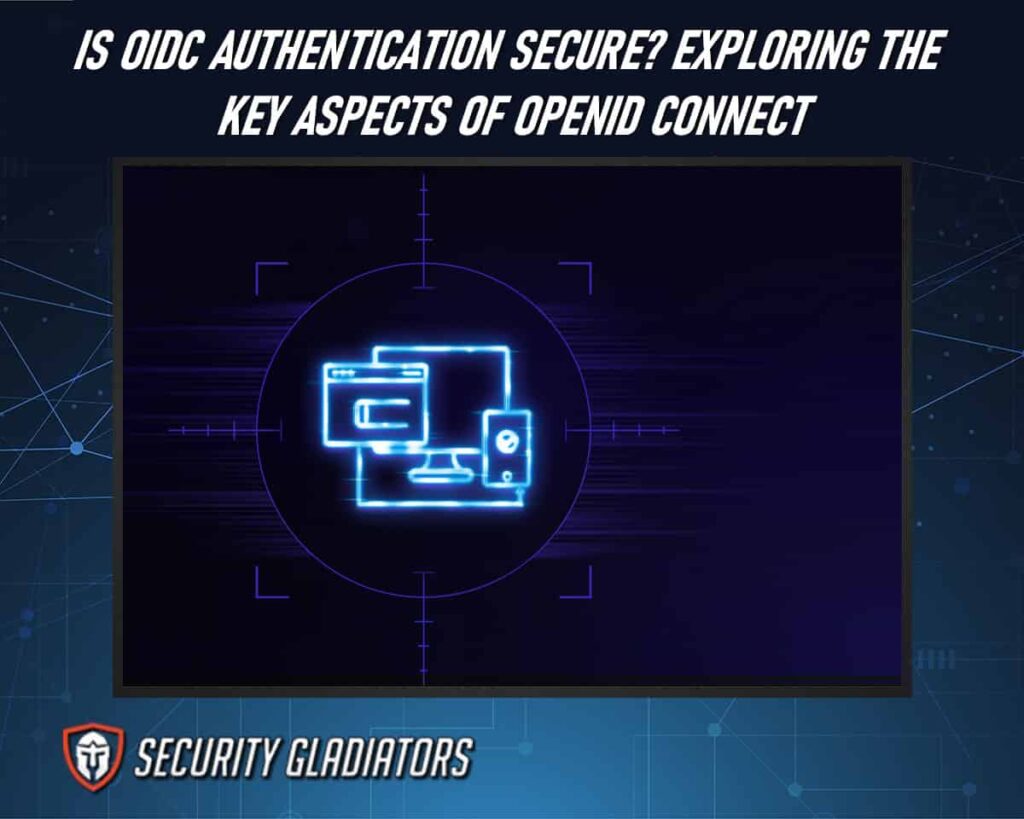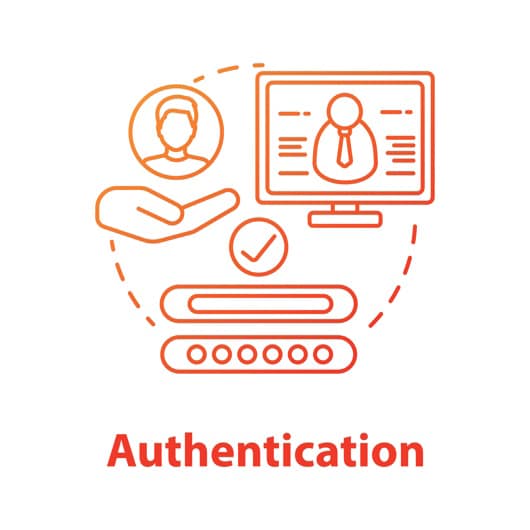
Table of Contents
What Is OIDC Authentication?
OIDC, also known as OpenID Connect, is an identity authentication protocol built on top of OAuth 2.0. It provides a standardized framework for authentication and authorization, facilitating secure user access to web applications and APIs. With OIDC, users can authenticate themselves to an application or service using an identity provider (IDP), which verifies their identity and issues an access token. This access token contains the necessary information to authorize the user’s access to protected resources without exposing their actual credentials. The IDP acts as a trusted third party that verifies the user’s identity through various mechanisms such as username/password authentication or multifactor authentication. This ensures that only authenticated users with valid credentials can gain access to the requested resources, enhancing security and mitigating potential risks associated with unauthorized access attempts.
Some of the benefits of OIDC authentication include flexibility, security, and user-friendly features, making it a popular choice for implementing authentication in modern, interconnected systems.
How Does OIDC Work?
The OIDC (OpenID Connect) authentication process involves multiple parties, including the user, identity providers (IdPs), and relying parties (RPs).
Here’s a typical OIDC authentication process:
User Initiates Authentication
The process begins when a user tries to access a relying party’s (RP) protected resource or log in to an RP (typically a web application). The user indicates their intention to log in, often by clicking a “Log In” button or accessing a secured resource.
Request for Authentication
The RP sends an authentication request to the user. This request may include information about the requested scope (the permissions requested), the desired response type (e.g., code or token), and a redirect URI where the user will be sent after authentication.
User Chooses Identity Provider
The user, after receiving the authentication request, chooses their preferred identity provider (IDP) to perform the authentication. The IDP could be a service like Google, Facebook, or a corporate IDP.
User Authentication
The selected IDP authenticates the user. This authentication process can vary depending on the IDP but often involves the user providing their credentials (username and password) or using multi-factor authentication. Once authenticated, the IDP generates tokens.
Token Generation
The IDP generates two primary tokens:
ID Token
A JSON Web Token (JWT) that contains identity information about the user, such as username or email. The ID token is digitally signed by the IDP to ensure its integrity.
Access Token
A token that represents the user’s authorization to access specific resources. It may also include information about the user’s permissions (scopes).
User Consent
Before the IdP returns the tokens to the RP, the user may be prompted to grant consent for the requested permissions. This ensures that users are aware of and approve the RP to access data requested.
Token Delivery to RP
After successful authentication and user consent, the IDP redirects the user back to the RP’s specified redirect URI, with the ID token and, if applicable, the access token.
Token Validation
The RP validates the ID token’s signature to ensure its integrity and authenticity. This step is crucial to prevent token tampering. It also checks the claims in the ID token to confirm the user’s identity.
Resource Access
With a valid ID token and, if necessary, an access token, the RP can now allow the user to access protected resources or perform specific actions within the application.
Token Expiration and Refresh (Optional)
Access tokens often have a limited lifespan. When they expire, the RP can use a refresh token (if provided by the IDP) to obtain a new access token without requiring the user to re-authenticate. This helps maintain user sessions and security.
Mechanisms Through Which OIDC Work
Here are two ways through which OIDC works:
Federated Identity
Federated identity is a concept that evokes a sense of interconnectedness and empowerment as it allows users to seamlessly access multiple applications using a single set of credentials. OIDC enables users to authenticate themselves with an identity provider (IDP), which then verifies their credentials and provides them with an access token. This access token can then be used to access various applications without the need for separate logins.
From a cybersecurity perspective, federated identity brings both benefits and challenges. On one hand, it simplifies the user experience by reducing the number of passwords they need to remember and eliminating the risk associated with weak or reused passwords. Additionally, OIDC utilizes industry-standard security protocols such as OAuth 2.0 and JSON Web Tokens (JWTs) to ensure the secure transmission of user information between different parties involved in the authentication process.
However, there are also potential security issues associated with federated identity, such as relying on a single point of failure (the IDP) and the possibility of compromised accounts providing unauthorized access across multiple applications. Therefore, it is essential for organizations implementing OIDC to carefully consider these security aspects and implement appropriate measures to mitigate potential risks while reaping the benefits offered by federated identity within OIDC authentication systems.
Authentication and Authorization
Authentication and authorization are two fundamental components of secure access control in web applications. While authentication verifies the identity of a user, authorization determines what actions or resources that user is allowed to access. In the context of OpenID Connect (OIDC), one essential technique for authorization is the use of access tokens. These tokens, obtained during the authentication process, serve as a means of verifying the user’s permissions and rights within the application. By including specific scopes in the access token, OIDC enables fine-grained authorization, allowing applications to restrict access to certain resources based on user roles and permissions. This technique ensures that only authorized users can access specific functionalities or data, enhancing security and data protection in OIDC-based applications.
Security Features of OIDC
Security is a paramount concern in federated identity systems, and the security features of OIDC provide organizations with robust measures to protect users’ identities and permissions while ensuring seamless access to multiple applications.

To achieve this level of security, OIDC incorporates several key features:
Token-Based Authentication
OIDC relies on tokens for authentication, which reduces the risk of exposing sensitive user credentials.
OpenID Provider (OP)
The OP acts as the central authority responsible for authenticating users and issuing identity tokens. It ensures that only trusted parties can authenticate users and gain access to their identity data.
Authorization Server (AS)
The AS manages access control policies by granting or denying permissions based on the information contained in the identity tokens issued by the OP.
Resource Server (RS)
The RS hosts protected resources and verifies the validity of access tokens presented by clients before granting them access.
OIDC Use Cases
One of the compelling aspects of OIDC is its versatility, as it offers a wide range of use cases that cater to different industries and scenarios. The OIDC authentication protocol provides a secure and standardized method for user authentication across various platforms.
Here are some of the most common use cases of OIDC:
Mobile App Development
With the increasing popularity of mobile apps, OIDC offers a seamless and secure way to authenticate users within these apps. Whether it’s a native app or a web-based app accessed through a mobile device, OIDC can be implemented to provide secure authentication using OpenID providers. This allows users to log in using their existing credentials from popular identity providers such as Google, Facebook, or Microsoft, ensuring both convenience and security.
Brute Force Prevention
To enhance the security of user authentication, implementing measures to prevent brute-force attacks is essential. Brute force attacks involve an attacker systematically guessing passwords or access tokens until they gain access to a user’s account. Brute attacks can pose a significant threat to the security of user identities and the overall system. By implementing proper brute force prevention mechanisms, such as rate-limiting login attempts, enforcing strong password policies, and implementing multi-factor authentication, organizations can significantly reduce the risk of successful brute force attacks.
Additionally, incorporating JSON Web Tokens (JWTs) in OIDC authentication adds an extra layer of security by using digitally signed tokens that contain encrypted information about the authenticated user. This ensures that only trusted parties can verify and trust these tokens, further safeguarding against unauthorized access to user identities.
Phishing Prevention
Phishing attacks are deceptive techniques used by malicious actors to trick users into divulging their sensitive information, such as usernames and passwords. To counteract this threat, OIDC provides several mechanisms for phishing prevention. Firstly, it encourages the use of secure communication channels, such as HTTPS, to protect the transmission of user identity data across different parties involved in the authentication process. Additionally, OIDC incorporates strong cryptographic algorithms and protocols for message exchange between entities involved in the authentication flow, which helps ensure that only trusted parties can access user identity information.
Furthermore, OIDC recommends implementing multi-factor authentication (MFA) techniques that require users to provide additional forms of verification beyond just a username and password combination. This adds an extra layer of security against phishing attempts by requiring attackers to bypass multiple verification steps.
Privacy Protection
Privacy protection is another important aspect of OIDC authentication. In the OIDC framework, user identity is securely transferred between the identity provider and the relying party. This ensures that sensitive user information remains private and confidential. One way this is achieved is through token encryption, where the user’s identity information is encrypted to prevent unauthorized access. Additionally, security assertions are used to provide a level of assurance regarding the user’s identity during authentication. These security assertions are typically in the form of digitally signed tokens that contain relevant information about the user. By using these tokens, relying parties can verify the authenticity and integrity of the user’s identity information before granting access to protected resources. This prevents any potential privacy breaches or unauthorized access to sensitive data.

Is OIDC Authentication Secure?
So, Is OIDC secure?
OpenID Connect (OIDC) provides a robust framework for user authentication and identity management in modern web and mobile applications. When implemented correctly, OIDC offers a high level of security. It leverages industry-standard cryptographic techniques and secure token-based communication to ensure the integrity and confidentiality of user data. The use of JSON Web Tokens (JWTs) for identity tokens adds an extra layer of security, making it challenging for malicious actors to tamper with or impersonate users. Furthermore, OIDC allows for the secure delegation of authentication to trusted identity providers, which are often well-equipped to handle security concerns. However, the overall security of an OIDC implementation also depends on the practices of the developers and administrators configuring the system. Properly configuring and maintaining OIDC components, handling tokens securely, and staying informed about security best practices are essential for ensuring the security of OIDC-based applications. In conclusion, OIDC is a secure authentication framework, but its security hinges on proper implementation and diligent maintenance by those responsible for its deployment.

Frequently Asked Questions
Can OIDC Be Used for Multi-Factor Authentication?
Yes, OIDC can be used for multi-factor authentication. It allows the integration of various authentication methods such as passwords, security tokens, and biometrics, providing an additional layer of security to the authentication process.
How Does OIDC Handle Session Management?
OIDC handles session management through the use of tokens. When a user logs in, they receive an ID token that contains their identity information. This token is then used to authenticate subsequent requests and maintain the user’s session.
Is There a Limit to the Number of Clients That Can Be Registered With an OIDC Provider?
The limit to the number of clients that can be registered with an OpenID Connect (OIDC) provider is typically not fixed by the OIDC specification itself. Instead, it depends on the specific implementation and infrastructure of the OIDC provider, as well as any policy or resource constraints set by the provider or administrator.
Can OIDC Be Used for Single Sign-on Across Multiple Domains?
Yes, OIDC can be used for single sign-on across multiple domains. It provides a standardized protocol for authentication and authorization, allowing users to authenticate once and access multiple applications without the need for separate logins.
Conclusion
OIDC (OpenID Connect) authentication, when properly implemented and configured, can provide a robust and secure identity authentication solution for applications and services. However, like any security mechanism, its effectiveness depends on careful setup, maintenance, and adherence to best practices to mitigate potential risks and vulnerabilities.

